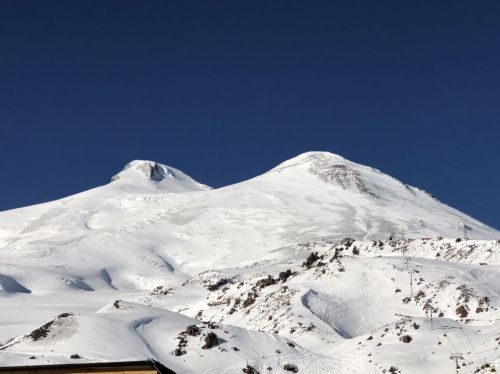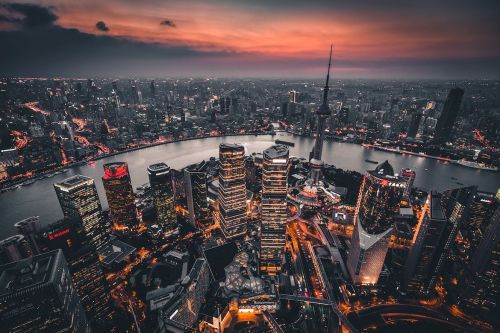It was a dream and a matter of prestige for the Romanov dynasty to gain access to the Baltic Sea and build a metropolis to testify to Russia's emerging power. This was accomplished by Tsar Peter the Great. The official date of the city's founding is considered as May 16, 1703. St. Petersburg was built on islands, which were connected by numerous bridges. For this reason, the city is called the Venice of the North. It is one of the world's most magnificent urban complexes, an extraordinary place, a city of museums, theaters, and art in the broadest sense.
Russia's wars with Sweden over the lands of the Neva River continued for centuries. They were fought as early as the 13th century, under Alexander Nevsky, and in the Livonian War in the 16th century. Only the success of the Northern War finally returned these lands to Russia.
This date was immortalized on a stone slab specially prepared for the occasion, on which an inscription was engraved: "In the year of our Lord 1703, on May 16, the city of St. Petersburg was founded by Tsar and Grand Duke Peter Alekseyevich."
Construction of the fortress began on Zayachy Island (Hare Island), located at the mouth of the Neva River. The most prominent architects of the time took part in the construction work. The history of the fortress is quite grim—many workers died during its construction, and later it was housing political prisoners. Among them were Decembrists, Dostoevsky, Gorky, Trotsky, and after the Kosciuszko insurrection, Tadeusz Kosciuszko, Julian Ursyn Niemcewicz and Jan Kilinski.
The carpenters built him a cottage, consisting of two chambers divided by a hallway, with a small door through which, when entering, he had to bend down a lot, since he was of fair height (203 cm). He slept in one of the chambers, and worked in the other–he had a working table, on which he laid out plans and drew a vision of the future St. Petersburg. The tsar lived in his hut for six years. Today the log cabin stands inside a larger building protecting it, which also houses the Museum of City History. The cruiser Aurora (now the Museum of the Revolution) is moored near Peter I's house. A shot was fired from its cannon at 9:40 p.m. on October 25, 1917, which was the signal to storm the Winter Palace.
According to topographic data from 1864, there were 101 of them. In reality, there are far fewer. Their number has decreased due to natural factors and as a result of human activity. Currently, it is assumed that there are about 50 islands.
The first bridge across the Neva was opened in 1727.
It was being built in very difficult conditions (swampy, unfamiliar terrain, low temperatures). The pace of construction was tremendous, the city was being built with unprecedented momentum in Europe at the time. To intensify construction, Tsar Peter I forbade the erection of brick houses in Russia outside of St. Petersburg. It initially functioned as Petropol or Petropolis (city of stone).
The most important state institutions began to move to the new capital, and the Senate, which moved to St. Petersburg in 1721, proclaimed Tsar Peter the Great as Emperor of All-Russia.
The construction of this church was undertaken a month after work on the fortification began. It was the first Orthodox church in the new Russian capital under construction.
The first Orthodox church was wooden. In 1712, the cornerstone of a new, much larger church was laid. Its designer was the Italian architect Domenico Trezzini. The main element of the church is an 88-meter bell tower with a 34-meter high spire. Peter I's wish was for the church's tower to surpass Moscow's Ivan the Great Bell Tower (81 meters) in the Moscow Kremlin complex.
In addition to liturgical items, it houses exhibits related to Russian conquests, antique banners, and weapons.
The exception is Peter II, grandson of Peter I, the last descendant in the male line of the Romanov dynasty. He is buried in the Arkhangelsk Cathedral in Moscow.
The rule was that the facades of the houses were built fronting the streets and canals, so the city's buildings were very orderly. Many new architectural structures were erected at that time: St. Nicholas Naval Cathedral, Smolny Convent, the Winter Palace (it was built at the behest of Tsarina Elizabeth, the younger daughter of Peter I, modeled on the French Versailles. Empress Catherine II, known as Catherine the Great, was the first to reside there), which is the main building of the Hermitage Museum, the Marble Palace, the Tauride Palace and others.
At that time, such architectural structures as the Admiralty, the Twelve Colleges (today it houses St. Petersburg University), the Saints Peter and Paul Cathedral, and the palaces in Tsarskoye Selo and Peterhof were built.
His architecture delighted the tsars. The buildings he designed were monumental, but at the same time full of lightness. His designs included the Winter Palace, the Smolny Convent, the Summer Palace, which has not survived, Tsarskoye Selo, and Peterhof Palace. Other architects included: Voronichin, Trezzini, Bazhenov, Kameron, and Rinaldi.
The style of construction was greatly influenced by the victory over Napoleon, and ideas of patriotism and a sense of strength prevailed. At that time, the construction of the Kazan Cathedral with a dome in the style of St. Peter's Basilica and a magnificent colonnade began, the Mining Institute was built and one of the city's most magnificent buildings - the Admiralty Palace - was rebuilt following the new trends.
In honor of victories in the wars with Turkey and Persia, the Moscow Gate was erected. The Winter Palace, which suffered a fire in 1837, was also rebuilt.
During the French offensive in 1812, St. Petersburg was not Napoleon's target. He attacked the "heart" of Russia - Moscow, thanks to which St. Petersburg was not destroyed.
A railroad connection between Moscow and St. Petersburg was also built.
At the beginning of the 19th century, about 300.000 people lived in St. Petersburg, in 1853 - about 0.5 million, in 1900 - about 1.5 million, and in 1917, when it had already become Petrograd - 2.5 million people.
The socialist organization of the Petrograders, a group of young Russian intellectuals who were supporters of French Utopian socialism, was also active there.
New palaces and religious buildings continued to be built, while wealthy capitalists and landowners erected hotels, villas, and palaces. One of St. Petersburg's most famous hotels, the Astoria, was built at this time, as well as the villa of Matylda Krzesinskaya, a Russian dancer of Polish descent and star of the Mariinsky Theater in St. Petersburg. The Orthodox Church of the Resurrection was also built, referring to the old Russian style of the Cathedral of Vasily the Blessed in Moscow.
The first name was St. Petersburg; after the outbreak of World War I, the German-sounding name was changed to Petrograd for patriotic reasons, and ten years later to Leningrad to honor Vladimir Lenin. In 1991, the former name of St. Petersburg was restored.
It was used as early as the 19th century, in Soviet times and now.
The Germans surrounded Leningrad with a tight cordon and for 879 days besieged the city, which was then home to 3.1 million people. The blockade began in September 1941 and ended in January 1944. There was a shortage of food, and 640.000 people died of starvation. 90% died of malnutrition, and only 10% died of warfare. The Germans never succeeded in capturing the city.
In 2003, St. Petersburg celebrated its 300th anniversary, and UNESCO declared that year the Year of St. Petersburg.
At the time, the city had a population of more than 5 million.
It is home to the Hermitage Museum, one of the three largest museums in the world. The museum is housed in five palaces on the banks of the Neva River. Its name comes from one of Peter I's winter palaces. The main building of the Hermitage is the Winter Palace. The palace was turned into an art gallery by Empress Catherine II, who asked French philosopher Denis Diderot to buy paintings from French collections on her behalf. In this way, canvases of the most outstanding painters (Rembrandt, Rubens, Titian, Watteau, Poussin, Gauguin, Picasso, Matisse, Monet, Canova, and others) came to St. Petersburg.
The last king of Poland was buried after his death in St. Petersburg on February 12, 1798, in the Church of St. Catherine on the Nevsky Prospekt. He rested there until 1938.
In the late 1980s, it reached the peak of its development and became the largest streetcar network in the world, as documented in the Guinness Book of World Records.
Adam Mickiewicz was also honored with a monument.
Maria Szymanowska was a pianist and composer, one of the first female pianists in the history of European culture. She settled in St. Petersburg in 1827, where she was a court pianist and ran the city's famous salon, which was frequented by representatives of the cosmopolitan elite of the Russian capital. Among them were the most prominent figures of music and literature: including Pushkin, Glinka, Karamzin, Mickiewicz, Pyotr Vyazemsky, Ivan Krylov, painters Oleshkevich, Orlovsky, and Vankovich. She died in St. Petersburg during a cholera epidemic, so she was buried in a special cemetery, later named Mitrofanievskoe Cemetery. The grave has been preserved to our days. In 2010, her monument (cenotaph) was unveiled in St. Petersburg's Necropolis of the Masters of Art next to the Alexander Nevsky Lavra on Nevsky Prospect.
This is a phenomenon that occurs in St. Petersburg from late May to mid-July. It is an astronomical cyclic phenomenon, occurring at high latitudes (above 57 degrees N or S), consisting of the fact that at a certain period of the year, there is no complete darkness at night, dusk passes directly into dawn. During white nights, the sun's disc hides below the horizon, but quite shallowly. The phenomenon of light scattering in the upper layers of the atmosphere keeps the sky bright.













